
The ultimate go-to for resources and instruction on writing.
- Subject:
- Creative Writing
- English Language Arts
- Material Type:
- Activity/Lab
- Lesson
- Module
- Primary Source
- Teaching/Learning Strategy
- Author:
- Purdue Writing Lab
- Date Added:
- 04/01/2019

The ultimate go-to for resources and instruction on writing.
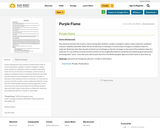
Science Background:
Any chemical reaction that results in atoms having their oxidation numbers changed is called a redox (reduction-oxidation) reaction. Oxidation describes either the loss of electrons or hydrogen, or the increase of oxygen or oxidation state of a molecule. Reduction describes the gain of electrons or hydrogen or the loss of oxygen or decrease of the oxidation state of a molecule. It is not entirely accurate, but the reaction can be roughly described by saying that the Oxidizing agent (potassium permanganate) “wants” more electrons and accepts them from the Reducing agent (glycerol) which wants to give them up.
Materials: potassium permanganate, glycerin, crucible or watch glass

The Innocence Project, founded in 1992 by Peter Neufeld and Barry Scheck at Cardozo School of Law, exonerates the wrongly convicted through DNA testing and reforms the criminal justice system to prevent future injustice. The Innocence Project's mission is to free the staggering number of innocent people who remain incarcerated, and to bring reform to the system responsible for their unjust imprisonment.

This resource contains information on:deciding if a learning opportunity is differentiation, presonalization or individualizationwhat leaders and learners do in personalized learninghow to move towards personalization using the transfer of responsbility

Students will discuss the sculpture "Python Killing a Gnu" by Antoine-Louis Barye. They will use their imagination to visualize a setting for the python depicted in sculpture. Then they will describe their setting, sculpt a clay snake, and create their setting using mixed media.

QR Code Podcast
QR Costs in the Classroom
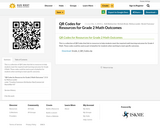
This is a collection of QR Codes that link to resources to help students meet the required math learning outcomes for Grade 4 Math. These codes could be used as part of playlists for students when working to meet specific outcomes.
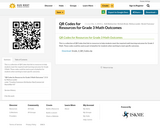
This is a collection of QR Codes that link to resources to help students meet the required math learning outcomes for Grade 3 Math. These codes could be used as part of playlists for students when working to meet specific outcomes.
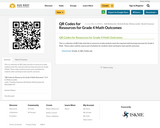
This is a collection of QR Codes that link to resources to help students meet the required math learning outcomes for Grade 4 Math. These codes could be used as part of playlists for students when working to meet specific outcomes.

I. Introduction ...............................................................................................................................................5
II. Understanding Competency-Based Education ...............................................................................9
A. Readiness for College, Career and Life: The Purpose of K-12 Public Education Today .................10
B. How Does Competency-Based Education Differ from the Traditional System of Education? .....12
C. Competency-Based Education and Personalized Learning Go Hand in Hand ................................22
III. Sixteen Quality Design Principles .....................................................................................................25
A. Purpose and Culture Design Principles ........................................................................................................30
#1 Purpose-Driven ...................................................................................................................................................... 31
#2 Commit to Equity ..................................................................................................................................................37
#3 Nurture a Culture of Learning and Inclusivity .................................................................................................41
#4 Foster the Development of a Growth Mindset ...............................................................................................45
#5 Cultivate Empowering and Distributed Leadership ........................................................................................48
B. Teaching and Learning Design Principles...................................................................................................53
#6 Base School Design and Pedagogy on Learning Sciences ...........................................................................54
#7 Activate Student Agency and Ownership ..........................................................................................................59
#8 Design for the Development of Rigorous Higher-Level Skills ......................................................................63
#9 Ensure Responsiveness .........................................................................................................................................66
C. Structure Design Principles .............................................................................................................................70
#10 Seek Intentionality and Alignment ....................................................................................................................71
#11 Establish Mechanisms to Ensure Consistency and Reliability .....................................................................77
#12 Maximize Transparency .......................................................................................................................................81
#13 Invest in Educators as Learners .........................................................................................................................87
#14 Increase Organizational Flexibility ....................................................................................................................92
#15 Develop Processes for Ongoing Continuous Improvement and Organizational Learning .................96
#16 Advance Upon Demonstrated Mastery ...........................................................................................................99
IV. Conclusion .............................................................................................................................................105
V. Glossary ...................................................................................................................................................107
VI. About the Authors .................................................................................................................................113
VII. Endnotes ..................................................................................................................................................115
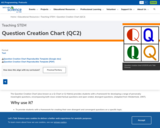
What is a Question Creation Chart (QC2)?
The Question Creation Chart (also known as a Q-Chart or Q-Matrix) provides students with a framework for developing a range of personally meaningful questions, encompassing both close-ended factual questions and open-ended, divergent questions. (Adapted from Weiderhold, 1997).
Why use it?
To provide students with a framework for creating their own divergent and convergent questions on a specific topic.
To encourage students to think deeply about a topic.
To help students strengthen their understanding and comprehension of a topic.
To stimulate students’ prior knowledge about a topic.
To collect information about students’ knowledge and understanding of a topic.
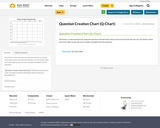
Directions: Create questions by using one word from the left hand column and one word from the top row. The farther down and to the right you go, the more complex and high-level the questions.
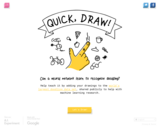
Google Quick, Draw! tells you what to draw and then uses artificial intelligence to try to guess what you're drawing. Fun!

Quill.org is an online interactive writing and grammar website which offers personalized grammar lessons for K-12 students, as well as EAL students. Quill.org is a free resource with a premium option. The benefits of this website are that you can offer your students personalized lessons based on their diagnostic results and it scores the assignments for you so you can use that as formative feedback to assign new activity packs. Teachers are able to see their entire class at a glance for each assignment and adding and removing students is very easy. It offers co teaching options and Quill.org also has fully prepared lesson plans which you can use for a whole class grammar lesson.
*Teachers can download explicit lesson plans to teach their entire class or small groups as well.

Download the sheet (some are free, some are paid), colour it - then add the Quiver app to your device and it will bring your picture to 3D life with Augmented reality!
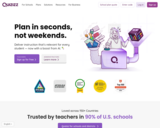
"Free self-paced quizzes to review, assess, and engage—in class and at home."
This is a great formative assessment tool that makes learning and reviewing feel like a game.
This tool is great for students when working individually (compared to Kahoot! and Quizlet where the class plays together). Kids could do them at a station, centre or even for homework.
Turn your assessment into a game!
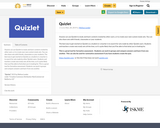
Anyone can use Quizlet to study and learn content created by other users, or to create your own custom study sets. You can also share sets with friends, classmates or your students.
The best way to get started on Quizlet as a student or a teacher is to search for sets made by other Quizlet users. Students and teachers create new study sets all the time, so it's quite likely that you'll be able to find what you're looking for.
This is a great tool for formative assessment. Students can work in groups and compare answers and learn from one another.
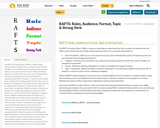
The RAFTs Technique (Santa, 1988) is a system to help students understand their role as a writer, the audience they will address, the varied formats for writing, and the expected content. It is an acronym that stands for:
Role of the Writer - Who are you as the writer? Are you Sir John A. Macdonald? A warrior? A homeless person? An auto mechanic? The endangered snail darter?
Audience - To whom are you writing? Is your audience the Canadian people? A friend? Your teacher? Readers of a newspaper? A local bank?
Format - What form will the writing take? Is it a letter? A classified ad? A speech? A poem?
Topic + strong Verb - What's the subject or the point of this piece? Is it to persuade a goddess to spare your life? To plead for a re-test? To call for stricter regulations on logging?
Almost all RAFTs writing assignments are written from a viewpoint different from the student's, to another audience rather than the teacher, and in a form different from the ordinary theme. Therefore, students are encouraged to use creative thinking and response as they connect their imagination to newly learned information.
The purpose of RAFTs is to give students a fresh way to think about approaching their writing. It occupies a nice middle ground between standard, dry essays and free-for-all creative writing. RAFTs combines the best of both. It also can be the way to bring together students' understanding of main ideas, organization, elaboration, and coherence...in other words, the criteria by which compositions are most commonly judged.
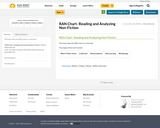
This chart takes the KWL chart to a new level.
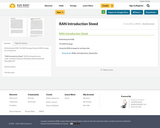
Rethinking the KWL
The RAN Strategy
Using the RAN strategy for writing Links